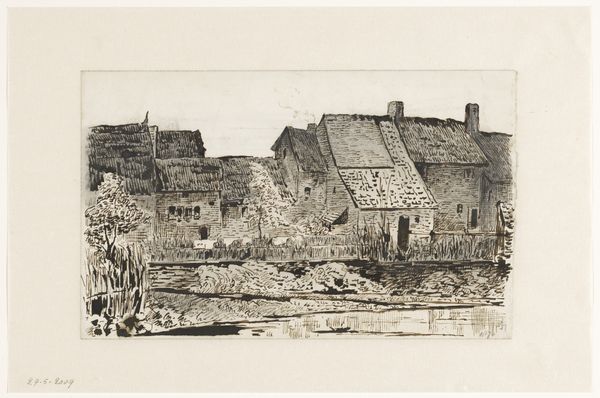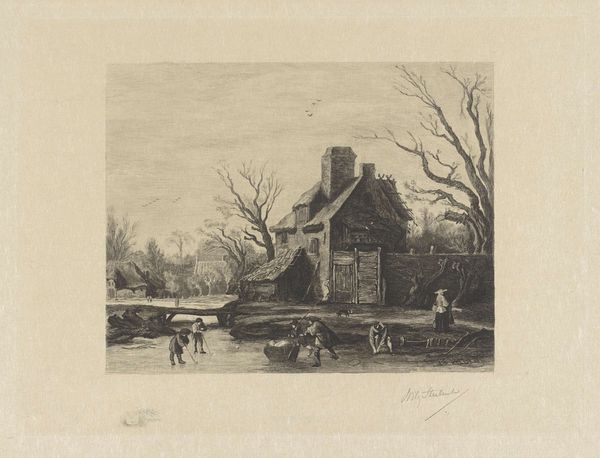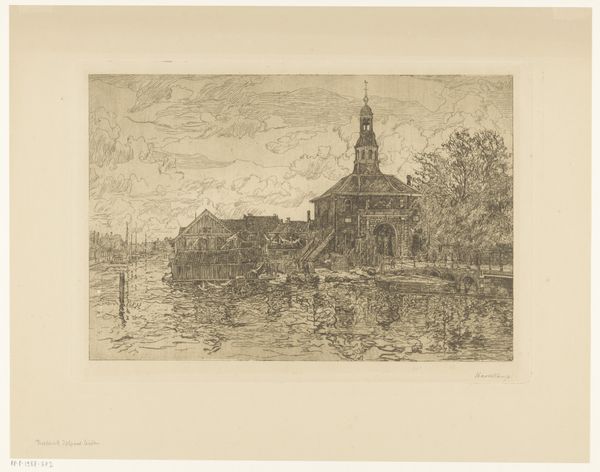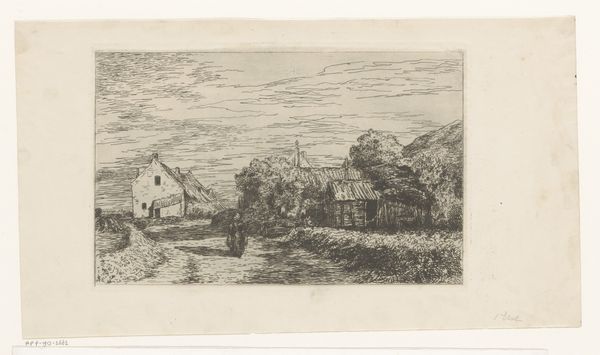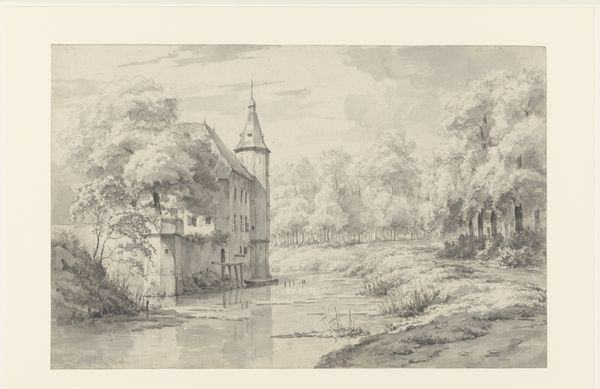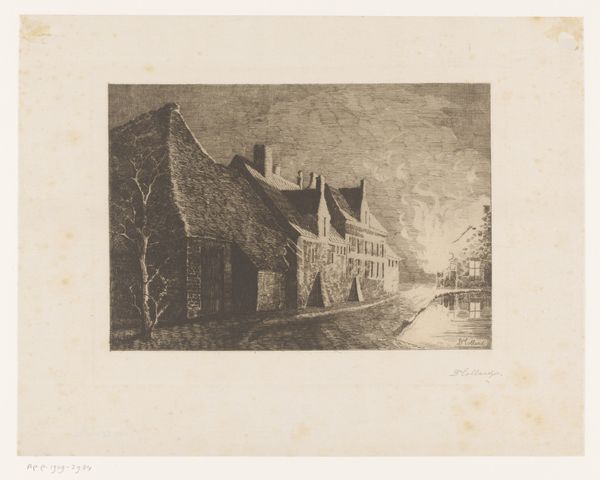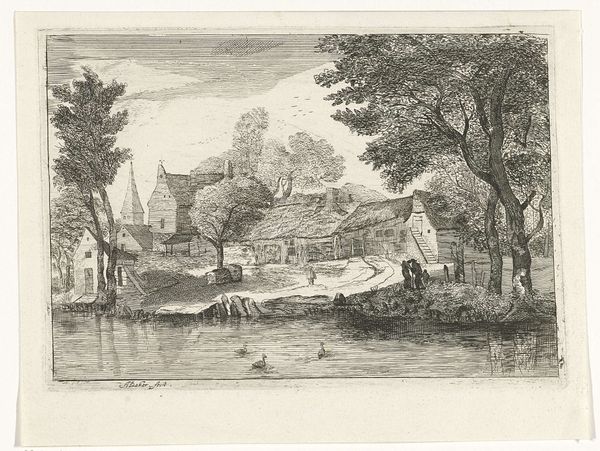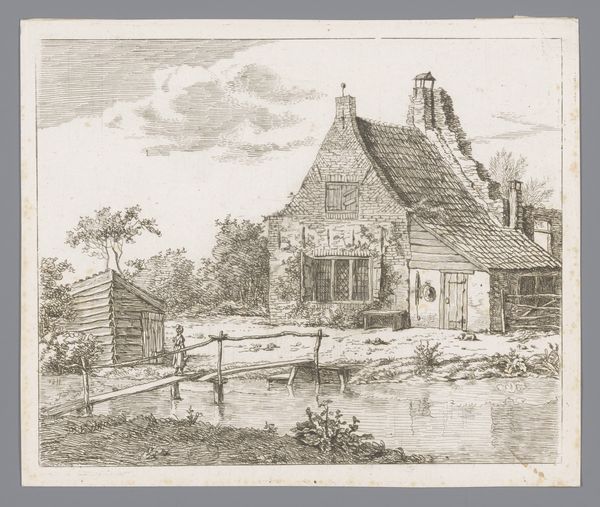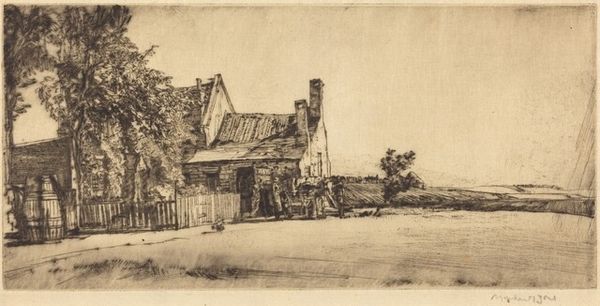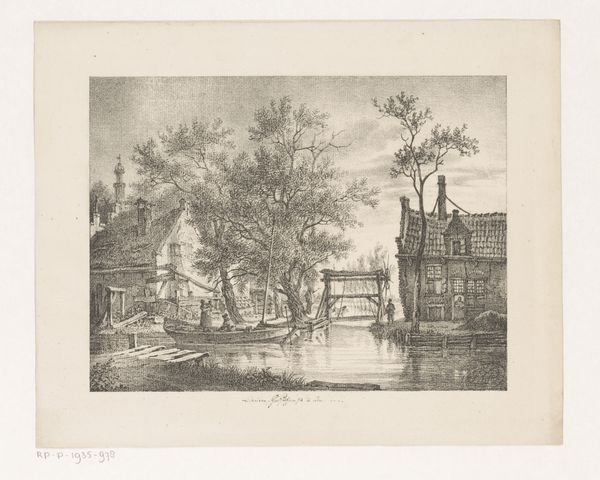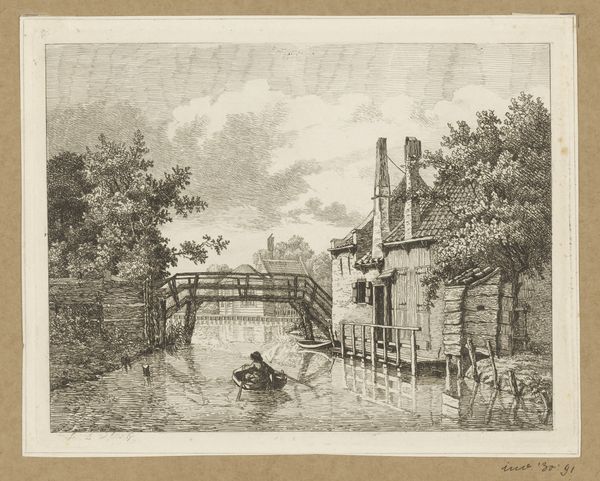
print, etching
#
dutch-golden-age
# print
#
etching
#
landscape
#
cityscape
#
realism
Dimensions: height 120 mm, width 157 mm
Copyright: Rijks Museum: Open Domain
Curator: We’re now looking at "Poortershuis aan het Damsterdiep in Groningen," an etching dating from between 1883 and 1925, created by Waalko Jans Dingemans. Editor: It has an almost mournful stillness to it. The muted tones create a sense of hushed solitude around the building reflected in the water. Curator: The image shows a house built directly on the water of the Damsterdiep canal. The style evokes Dutch Golden Age paintings, particularly in its attention to detail and the realistic rendering of light. The print offers a valuable glimpse into urban life of the late 19th and early 20th centuries. The lack of figures—except for those two barely visible in the distance—creates a certain feeling. Editor: Yes, a deliberate feeling of disconnect. Water, as a recurring symbol, might reflect shifting realities and social currents. Considering this was done during a time of great social upheaval and growing industrialization, it hints at the potential displacement and alienation people experienced as they moved away from traditional life into the city. The building’s sturdy form might also symbolize resistance and historical weight, as cities began changing rapidly. Curator: I see that too. It speaks to broader conversations around preserving cultural heritage amid ongoing change. Dingemans subtly connects the architectural landscape with societal transformation. Perhaps these are houses occupied primarily by men, connected with waterways where much commerce was completed, a potential economic and power structure being alluded to in the work. Editor: Fascinating. The reflections are intriguing. What does it mean when the foundations of a place, literal or metaphorical, seem to be swallowed by the passage of time? The clouds above, while gentle, still carry a sense of passing, as everything is transient. It feels like a melancholic but powerful meditation on time, change, and enduring architecture. Curator: Absolutely, and by examining the city itself and those structures which carry a kind of memory, it really does evoke a sense of how identities form, too. This seemingly straightforward depiction reveals itself to be something much more complicated than initially seen. Editor: Yes, Dingemans gifts us an enduring set of reflections.
Comments
No comments
Be the first to comment and join the conversation on the ultimate creative platform.

